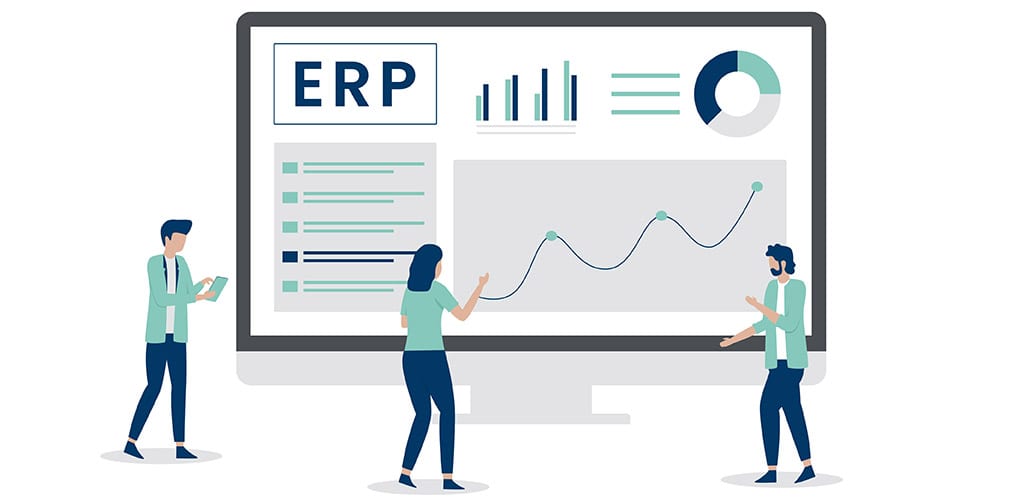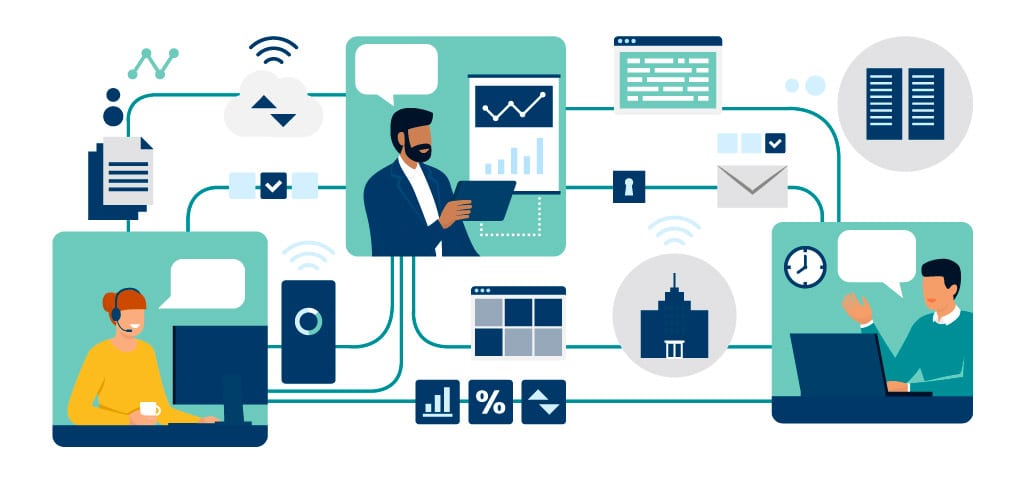How to Seamlessly Integrate Your Financial Close Processes
Blog post
Share
The past year forced organizations to drastically pivot the way business units function, especially within financial close processes. Accelerated by the transition to remote operations, financial close automation switched from a “nice-to-have” to a “must-have” for mid-market organizations. While many businesses have made the shift to automation, approximately half of mid-market organizations surveyed in our 2021 Global Financial Close Benchmark Report indicated that they have implemented very basic automation.
“51% of mid-market respondents reported that their automation is still very basic and extends to only being able to export spreadsheets from their respective ERP systems.” – 2021 Trintech Global Financial Close Benchmark Report
While implementing financial automation is a continuous process improvement and must start somewhere, approximately half of mid-market organizations still rely on manual processes, whether in the exclusive usage of spreadsheets and other legacy tools.
At first glance, financial process automation may appear overwhelming, but embarking on the journey to automating financial close processes starts with simplifying how you obtain the balance or transactions for reconciliations. By automating the sub-ledger transaction retrieval for matching, or general ledger balance to substantiate, organizations can drastically see a reduction in time spent on manual data entry from the ERP to financial close software, in addition to a reduction in overall cost.
[cta-content-placement]
Drag and Drop Financial Data with an Integration Hub
The Integration Hub is a different avenue for those seeking an automated method of importing data into financial automation software. Accounting teams can immediately start transferring balance or transaction files by importing data into an Integration Hub.
An Integration Hub is extremely helpful for those that have a small or swamped IT team that can’t help with every configuration and data transfer. Integration Hub is completely done by the user from start to finish, establishing complete control over financial data uploads. All it takes is a simple click and drag to initiate the download and import files to the Integration Hub.
Finance and accounting teams can then take financial automation even further with robotics software — such as Microsoft — to further automate file import into financial close software. Simplify your accountants’ day-to-day activities even further by scheduling file transfers overnight, so they can come into work prepared to tackle the next task in your close.
Utilize Pre-Built ERP Connectors
Systems of Record play a significant role in outlining a business’s financial operations but often have limited automation capabilities. Because of this, accountants are migrating outside of the ERP system in order to drive the completion of the financial close. Not only does this gathering, manipulation, and consolidation of data add several hours to accountants’ workloads but working exclusively within spreadsheets raises questions surrounding the security, quality, and compliance of the data flowing into and out of the financial close.

By utilizing pre-built ERP connectors, F&A teams can seamlessly integrate their existing ERP system, or systems, into financial automation software. This integration produces significant short-term and long-term organizational and departmental benefits.
Benefits of ERP Integration
Seamlessly integrating ERP financial data enables F&A teams to move away from manual-heavy processes and towards financial automation. In addition, finding a financial automation vendor that is ERP agnostic and seamlessly integrates with their ERP landscape empowers organizations to:
- Reduce reliance on internal IT teams
- Enhance visibility across all tasks in the financial close process
- Automate low-risk account reconciliations and highlight discrepancies
- Shorten the overall financial close cycle through efficiency gains
- Receive notifications of balance changes throughout the close
- Work within a standardized and centralized solution
- Decrease the organization’s risk profile by improving data quality
By integrating their existing ERPs into a financial automation solution, not only are organizations able to be up and running sooner, but they are able to remove ongoing support and custom code costs—increasing the organization’s return on investment.
Simplify the Data Integration Process with an Application Connector
When working within an ERP system, accountants typically export their general ledger data into spreadsheets to complete the month-end close. This incomplete process forces accountants to continue using manual methods of reconciliation, transaction matching, and close management. Keeping track of endless files, document versions, and status update meetings further extends the completion of time-sensitive deadlines.

Using an application connector via API enables organizations to eliminate the need for internal IT or external parties to configure a custom process.
What is an API?
Known as an Application Programming Interface, APIs enable two applications to communicate with each other. In the financial ecosystem, there is a natural expectation that all applications already communicate; the API acts as the messenger to send data from one application to another. Without this seamless integration and transmission of data, F&A teams are unable to send data in a secure way and ultimately resort to exporting their financial data into spreadsheets.
Application Connector Functionalities
Utilizing an application connector via API enables the transformation and integration of all source data, such as general ledger balances, general ledger transactions, and sub-ledger balances and transactions, from a wide variety of systems. Instead of waiting on IT to configure a new process for F&A teams, the application connector eliminates the need for outside help, further reducing remediation and resolution times.
In addition, the application connector offers the capability to:
- Receive data via API from legacy Secure File Transfer Protocol (SFTP) applications
- Perform data transformation
- Perform data validation
- Schedule data transfer frequency
- Publish and encrypt financial data
- Identify various data extracts (GL data in Text/XML/JSON)
- Map source against destination to apply mapping rules
- Support web service imports
- Authenticate API Calls
Ultimately, this allows organizations to extract the exact elements needed to complete their reconciliations and transaction matching, easing implementation friction and reducing dependence on internal IT.
Having a seamless integration of financial information from different systems is a necessity for the modern finance organization. As F&A teams navigate virtual environments, it is crucial that they embark on the journey to financial automation and streamline their close processes with integration.
Written by: Alex Clem

